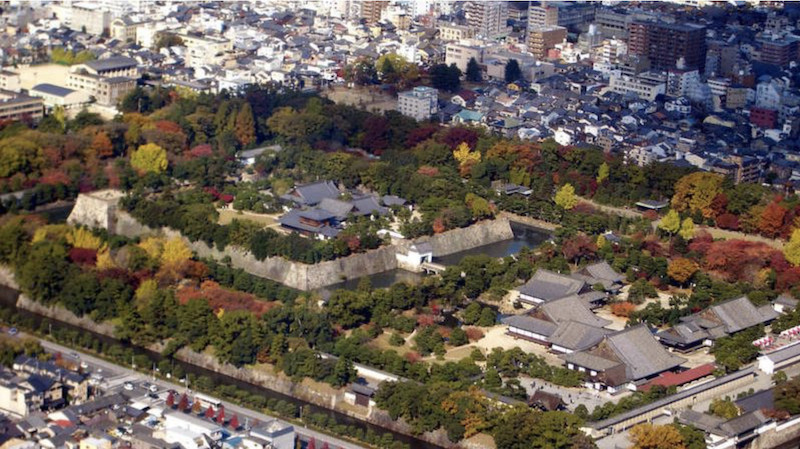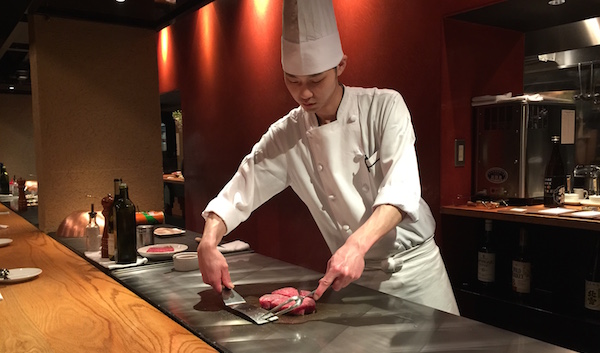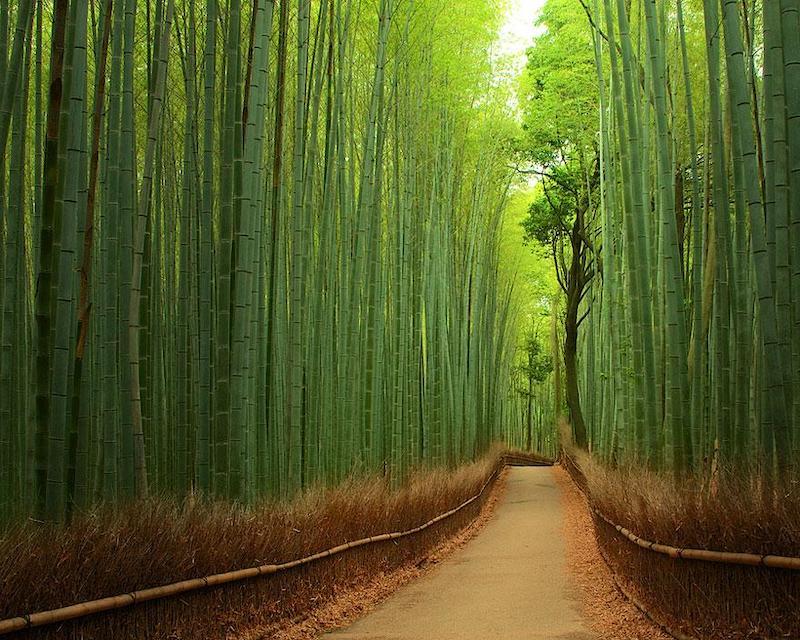2025 “Discover Japan – Luxury ‘Autumn Colours Spectacle’ Cuisine & Culture Experience”
Another UNIQUE Cooking Passions “Small-Group” Cuisine & Culture Journey
“We travel not to escape life, but for life not to escape us” – Anonymous

“Discover Japan – Luxury ‘Autumn Colours Spectacle’ Cuisine & Culture Experience”
DATES
12 Days / 11 Nights
TOUR ONE – Monday 03 November 2025 to Friday 14 November 2025
– 0 of 8 places x Pre-Booking Requests* – Waitlist* Currently Available
*Expressions of Interest/Waitlist for Pre-Booking Requests available
Please email Nico at urbanprovider@icloud.com to be advised should any of the currently Pre-Booked Requests not be taken up by our travellers.
TOUR TWO – Monday 17 November 2025 to Friday 28 November 2025
– 0 of 8 places x Pre-Booking Requests* – Waitlist* Currently Available
*Expressions of Interest/Waitlist for Pre-Booking Requests available
Please email Nico at urbanprovider@icloud.com to be advised should any of the currently Pre-Booked Requests not be taken up by our travellers.
When will the November 2025 “Discover Japan Experience” Final Pricing be available?
As Japanese hotels & accommodation providers do not publish availability & pricing until 360 days prior to check in dates, final pricing for our 2025 November “Discover Japan Experience” will be available early November 2024. As soon as our selected accommodation providers have advised us of their pricing for November 2025, we will be able to provide final pricing of the tour.
As an approximate indication, our recent May 2024 “Discover Japan Experience” pricing was ¥780,000 per person (Double) (~AUD$8,210pp).
As Japan’s Autumn Season (“Koyo”) competes with its Cherry Blossom Season (“Sakura”) as a peak travel season, accommodation pricing will be at a premium for the November 2025 experience as compared to the May 2024 pricing example.
Until final pricing of the tour is prepared, we are currently accepting “Pre-Booking Requests“ from clients interested in awaiting the final tour details and pricing to consider before securing their final places.
*What is a Pre-Booking Request?
Japan is now the most sought-after travel destination for global travellers, and it’s no surprise why it is at the top of many people’s Travel Bucket List! And for good reason…it is a truly fascinating and unique destination!
On our most recent “Discover Japan Experience” in May 2024 we certainly noticed the increase in traveller numbers from our previous visits and have been advised by our Japanese accommodation providers to secure accommodation at least 12 months prior to our tour dates.
We will be escorting only 8 travellers on our future “Discover Japan Experiences”.
We have found that a smaller group better suits the limited accommodations that are available at our hand-picked Japanese properties, as well as the ease a smaller group has with travelling via Japan’s efficient rail & public transport system that we will be experiencing. It also makes the tour more personal and flexible to accommodate any spontaneous & “last minute” experiences that might be presented to us during our travels that we should check out!
Due to the limited number of travellers that we will be escorting to Japan, we have established a “Pre-Booking Request” as a means to fairly offer places on a “first requested, first offered” basis.
A “Pre-Booking Request” is a provisional reservation that will allow you the flexibility and option to either accept or cancel your place once you have had the opportunity to review the final tour pricing when it becomes available in early November 2024.
Should you decide to not take up any places on the tour, they can then be offered to the next clients registered on our “Expressions of Interest/Waitlist” list for their consideration.
We trust this meets with your understanding!
Cooking Passions “Small Group” Cuisine & Culture Journeys
Cooking Passions Cuisine & Culture Journeys have been designed so that you can make the most of your precious time, as we have done all of the “behind the scenes” research to scope out the finest luxury hotels, sights, restaurants, spas, local transfers & excursions, so you don’t have too.
Each of our tours are designed so you can do as much or as little as you like, while allowing you plenty of free time to explore and immerse yourselves in the sights, shopping, relaxation and eating that YOU want to experience (we’ll be happy to provide suggestions and tips on some of our favourites from our previous trips). So all you have to do is book your preferred flight, pack a bag & a sense of adventure, and join us for an unforgettable and luxurious Japanese Cuisine & Culture experience!!
Japan’s Celebrated Autumn Season
Japan’s autumn colours – koyo – are one of the country’s best kept secrets!
While sakura (cherry blossoms) in spring gets most of the attention, nature puts on an equally spectacular show in autumn. From late September through to early December, the country is transformed into a breathtaking canvas of fiery reds, brilliant scarlets and regal gold.
During autumn the Japanese maple trees are ablaze with stunning red leaves and you’ll see these iconic trees throughout the country in both urban and rural areas such as forests, parks, gardens and temples. There are over a hundred varieties of maple in total, and the leaves turn from yellow through to orange before finally transitioning to a deep red colour.

As well as the abundance of Japanese maples, the country’s gingko trees are transformed into gold, while supporting acts like the Japanese rowan and larch also play their colourful part.
November is considered the best month to view the autumn colours in most parts of Japan!
The Mystique of “The Land of the Rising Sun”

Having travelled and escorted groups across many countries, Japan is unlike anywhere else we have visited and remains an entrancing enigma to many. Offering an enchanting mix of ancient rituals with futuristic modernity, Japan is a fascinating land of illuminating and exciting contradictions and definitely a “must see” destination on anyone’s travel bucket list.
From Tokyo’s dazzling neon-lit metropolis, Kyoto’s timeless emperor; shogun and geisha traditions; Himeji’s impossibly beautiful castle; and to Osaka’s vibrant nightlife & culinary scene, join us on our 12-Day “Discover’Highlights of Japan’ Luxury Culinary & Culture Experience” as our Small Group (10 travellers maximum) explores the “Land of the Rising Sun” – a truly captivating and enthralling country!
“Discover Japan” – Luxury Cuisine & Culture Experience
As a result of its unfamiliar cultural norms and diminishing language barrier, some travellers are reluctant to visit Japan!
We have curated our bespoke, fully escorted “Discover Japan – Luxury Cuisine & Culture Experience” so that you may comfortably explore some of Japan’s fascinating highlights in a fun and relaxed manner for an unforgettable, once in a lifetime Japanese cultural experience!
“Discover Japan” – Experience Highlights
-
Chic and cosmopolitan TOKYO including unmissable sights including Senso-ji Temple in Asakusa; Emperor Meiji Shrine; and the neon dazzle and buzzing energy of the Ginza, Shibuya, and Harajuku Districts.
-
The ancient Imperial Capital & beauty of KYOTO with Japan’s greatest collection of temples, palaces, shrines & gardens and its Shogun, Emperor and Geisha traditions..
-
A visit to one of the most beautiful castles in Japan – HIMEJI – an amazing representation of the pinnacle of castle technology in feudal Japan.
-
The stunningly beautiful riverside retreat of ARASHIYAMA, and its UNESCO Heritage Listed ancient Bamboo Forest.
-
RYOKAN & ONSEN EXPERIENCE – Explore one of Japan’s most beautiful Onsen/Hot Spring towns while experiencing classic Japanese Ryokan hospitality in a Relais & Châteaux property dating back over 300 years.
-
CULTURAL & CUISINE EXPERIENCES – Private English-Speaking guided explorations of some of Japan’s most famous sights and cuisine in Osaka, Kyoto and Tokyo
-
UNESCO WORLD HERITAGE – Visits to some of Japan’s stunningly beautiful World Heritage listed temples and shrines.
-
JAPANESE CULINARY EXPERIENCES– including sampling some of the most interesting, elegant & refined cuisine of the world with dining experiences covering many of Japan’s most famous dishes including Sushi; Teppanyaki; Ramen; Classic Kaiseki and Sake as well as a few of its more unusual street-food traditions.
-
BULLET TRAIN (SHINKANSEN) EXPERIENCES – travelling between locations on Japan’s highly efficient train network including its famous Shinkansen Bullet trains.
-
PERSONAL RELAXING TIME – Plenty of free time for you to pursue your own Japanese cultural/cuisine/shopping/relaxing activities.
DAY-BY-DAY ITINERARY
Day 1 – ARRIVAL* – OSAKA

-
Pre Arrival – For any participants that would like to arrive into Osaka prior to the tour start date, we can arrange for your additional night’s accommodation at our Osaka hotel, dependant on availability. Nico will be arriving into Osaka a few days prior to each of the tour start dates in preparation for everyone’s arrivals.
When arranging for your preferred international flights to Japan, please choose your:
-
ARRIVAL airport to be Kansai International Airport (KIX) which services Osaka
-
DEPARTURE airport to be Haneda International Airport (HND) which services Tokyo, and is much closer than Tokyo’s Narita Airport (NRT), for your departure.
ARRIVAL (Kansai International Airport to Osaka (Namba Station) – Osaka’s main city train station, Namba, can easily be reached by train from Kansai International Airport.
At our Pre-Trip Tour Briefing prior to departure, and included in your “Discover Japan Dossier”, we will provide you with complete instructions on how best to take the train to reach the Cross Hotel, . The trip takes about 50 minutes and the cost is approximately ¥1,490 (~USD15.00). From the Kansai Airport Station, the Nankai Limited Express Line takes you directly to Namba Station.
Our hotel, Cross Hotel Osaka, is a 900m walk away or short taxi ride from Namba Station.
ARRIVAL Private Airport Transfer (Optional) – A Private Airport Taxi Transfer can be pre-arranged upon your arrival into Kansai Airport, for the 60 minutes transfer from the airport to our hotel. The cost is approximately USD110.00.
OSAKA
Osaka has the vibrancy of Tokyo and the charm of Kyoto but possesses its own brand of character altogether.
Osaka’s importance as a merchant and port city dates back to 1586 with the building of the Osaka Castle by Toyotomi Hideyoshi who encouraged traders from other parts of Japan to settle in the city. It became the industrial powerhouse of Japan through the 1920’s and 1930’s and today is Japan’s third largest city after Tokyo and Yokohama.
As well as being famous for its extravagant and neon lit central city, it is also one of Japan’s culinary centres with a local cuisine renowned more for its practicality rather than finesse.
Our Accommodation – Cross Hotel Osaka
Wonderfully situated in the heart of Osaka’s Minami district, this stylish 4-star modern hotel is convenient for shopping, restaurants, nightlife, and public transportation. Cross Hotel is just a minute’s walk from the area and a 3-minute walk from Shinsaibashi is only a 5-minute stroll from the hotel. Chuo Ward is a great choice for travellers interested in shopping, street food and shopping for food.



15:00pm – Check into your room upon arrival at Cross Hotel Osaka. Enjoy a little walk around the area to experience the amazing energy of Osaka from our centrally located location.
18:30pm – Group Welcome Dinner – Meet in the hotel lobby for our departure to our Welcome Dinner where you will be introduced to “yakinuki” or Japanese BBQ, where you will get the opportunity to grill your own pieces of Matsusaka Beef and vegetables atop a charcoal BBQ set in your table, similar to Korean BBQ restaurants. Matsusaka wagyu beef gets its tasty reputation from the special treatment the cattle are given. They are fed beer to create a healthy appetite, and given a body massage with a mixture of shochu to ultimately provide the highest quality and taste.
Accommodation: Cross Hotel Osaka
(Included Meals : D)
Day 2 – “Osaka Highlights Walking Tour” and “Evening Food & Culture Tour Experience”
– Breakfast at your leisure
9:00am – Meet in the lobby to begin our exploration of Japan’s third largest city. Join Nico on a morning walking tour of some of Osaka’s highlights including:
-
Dotonbori Street (Osaka’s Eat Street) – Osaka is known as the gastronomists’ town, and thus the entire area of Dotonbori is filled with an unbelievable number of restaurants and amusement facilities, and is dearly loved by the Osakaites.

-
Kuromon Market – Osaka’s traditional food market
-
Nipponbashi / Den-Den Town – for a look at Osaka’s fascination for Otaka (Anime/Manga) culture and themed cafes.
-
Shinsekai (translated as “New World”) with its Tsutenkaku Tower, the “Osaka Eiffel Tower” constructed in 1912 and modelled after Paris’ Eiffel Tower.

-
Osaka Castle – One of the most famous landmarks in Japan, the five-story castle is one of the most visually spectacular creations in the country, with a history that dates back almost 450 years.The symbol of Osaka was built in 1583 on the former site of Ishiyama Honganji Temple, as ordered by Hideyoshi Toyotomi during the Azuchi-Momoyama Period. He was a famous warlord who successfully brought all provinces in Japan under his rule, unifying the nation in 1590.

Lunch – We will head back to Dotonbori where you can decide whether you’d like to visit one of the many Kaitenzushi (also known as conveyor belt sushi or sushi train) restaurants which was invented in Osaka in 1958 or you might prefer to sample a bowl of ramen at a uniquely Japanese “cubicle” ramen shop.

pm – Remainder of the afternoon at your leisure.
17:30pm – Osaka Evening Food Tour – Tonight we will be introduced to the Osaka philosophy of ‘kuidaore‘ – eat, drink and enjoy life! Guided by our English-speaking Japanese guide – Yuki – we will be escorted around Osaka’s lesser known restaurant & bar precincts visiting atmospheric venues and meeting colourful locals.
Our local Osakan guide will gently open the doors for us to see the city through the eyes of its inhabitants. Yuki will introduce us to some of Osaka’s classic dishes including Okonomiyaki (Savoury pancakes), Takoyaki (Osaka’s famous octopus dumplings) as well as demystifying for us one of Japan’s most iconic and often misunderstood culinary institutions – Fugu (Japanese Blowfish).
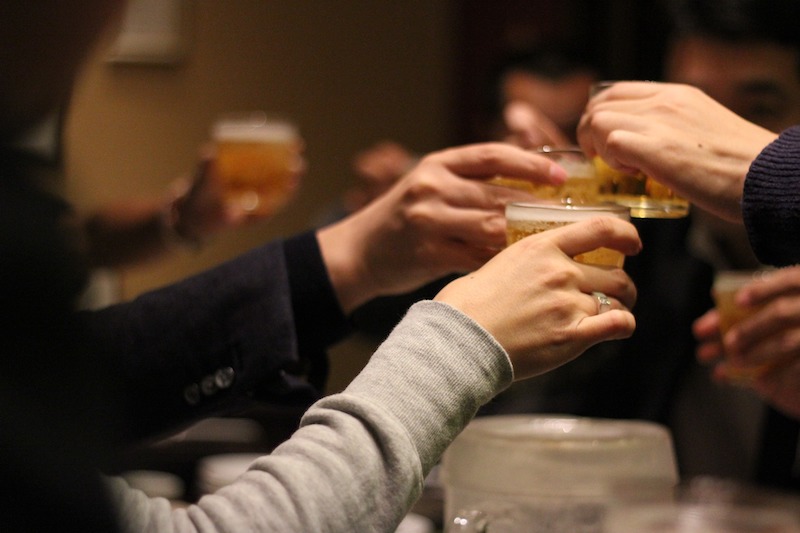
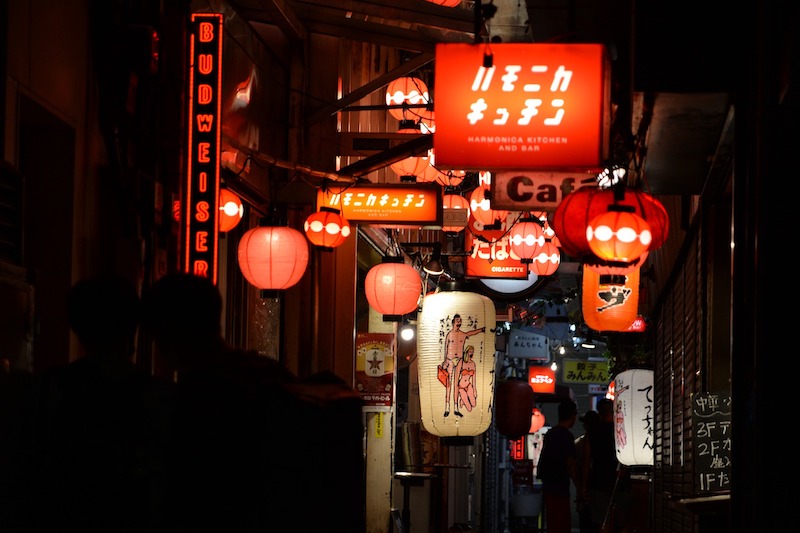


Accommodation: Cross Hotel Osaka
(Included Meals : B, D)
Day 3 – Himeji and Koko-En Gardens

Himeji
Himeji City is known first and foremost for its castle, a UNESCO World Heritage site that is widely considered to be one of Japan’s most beautiful and well-preserved castles.
Himeji’s old samurai fortress is over 400 years old and became known worldwide as the castle featured in the TV series Shogun. The UNESCO-protected castle has survived wars and natural disasters and is considered Japan’s most beautiful original castle. The castle reopened in 2015 after being closed for restoration for six years and is a very popular attraction.
7:30am – Breakfast at your leisure.
08:30am – Group departure for Himeji. This morning we will have our first opportunity to experience one of the world’s best ever forms of travel – a train ride on Japan’s legendary transportation marvel – the Shinkansen “Bullet Train”.
Trains in Japan are by far the best way of travelling from A to B, and are used widely by the local population. They are uber efficient, clean, safe, comfortable and fast! With speeds of up to 300km/h, we will be travelling the 280 kilometres between Osaka and Himeji in 1 hour and 30 minutes in whisper-quiet comfort.

09:45pm – Exploration of Himeji’s famous castle, also known as “The White Heron Castle” for its likeness to the elegant bird, the castle has been registered as a UNESCO World Heritage site since 1993. This majestic white castle is gorgeous to admire from the outside, but its impressiveness grows once you step into the grounds and inside the main tower (tenshukaku) and Western Bailey (Nishi no maru).
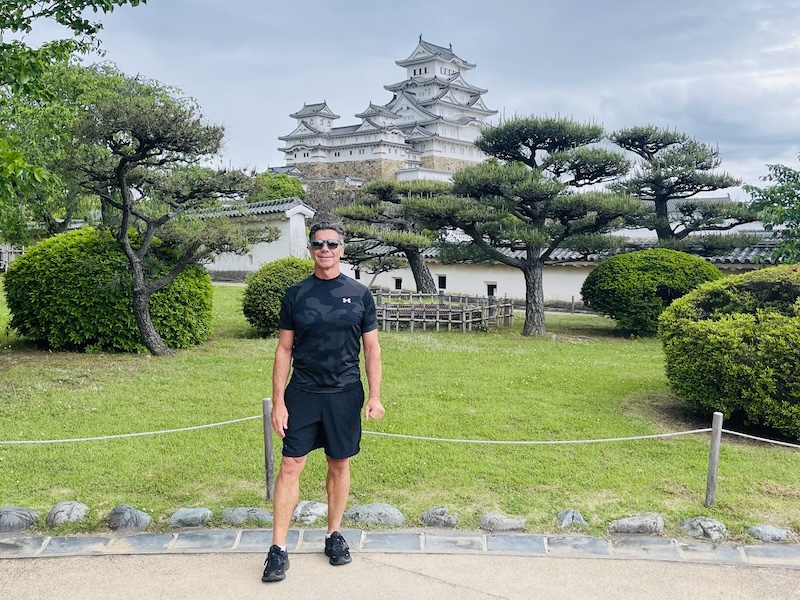
12noon – Koko-en Garden – After exploring Himeji Castle, we will visit Koko-en Garden.Built in 1992, Koko-en Garden is a relatively new garden, but no less interesting or important for that. It’s not just one garden; rather, Koko-en Garden consists of nine separate walled gardens across a sprawling nine acres, each with a different theme. They were designed according to various styles prevalent during the Edo Period (1603-1868).

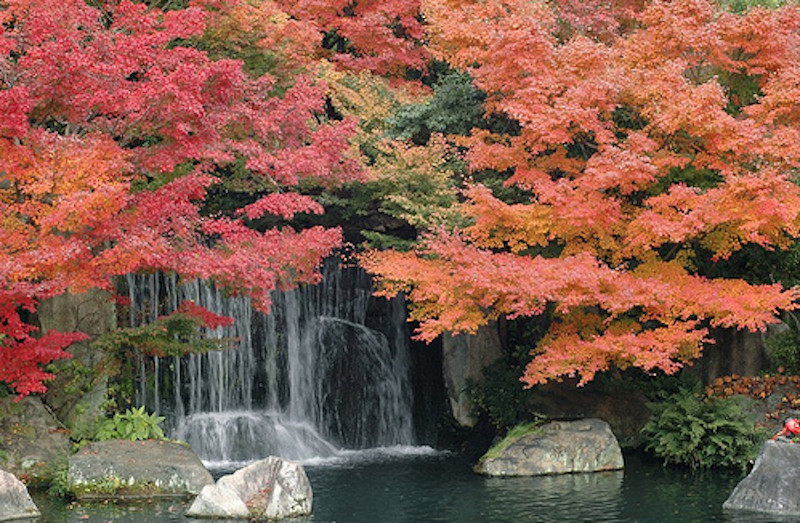
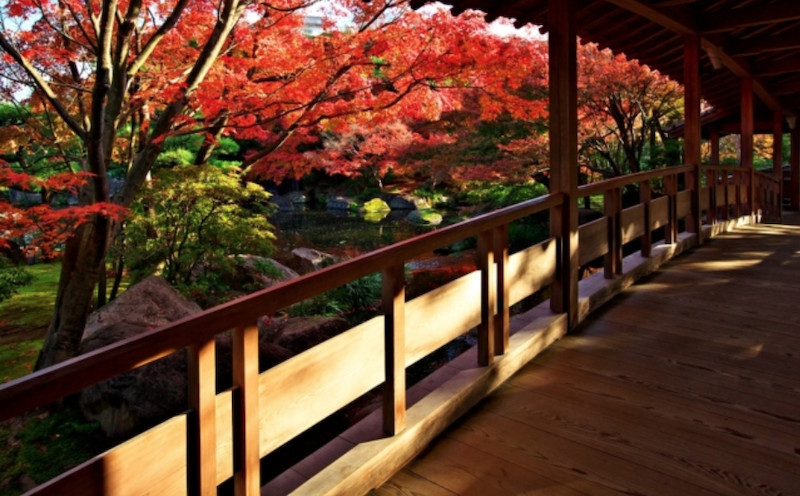
13:00pm – Return Shinkansen train journey to Osaka.
pm – Remainder of the afternoon and evening at your leisure to explore Osaka. Decide whether you’d like to do your own thing for dinner at one of Dotonbori’s many restaurants or we can decide as a group on where we would like to enjoy dinner together.
Accommodation: Cross Hotel Osaka
(Included Meals : B)
Day 4 – Kinosaki – Classic Japanese Ryokan & Onsen Experience
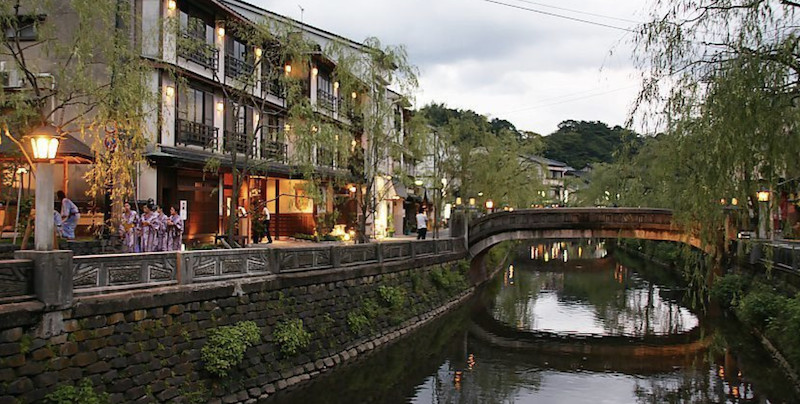

10:00am – Check out from our Osaka hotel for departure by local train to Kinosaki, situated on the Sea of Japan in Central Japan’s Hyogo Prefecture.
12noon – Departure from Osaka Station
15:00pm – Arrival at Kinosaki Onsen
Kinosaki Onsen
With over 1400 years of tradition, Kinosaki is one of Japan’s top onsen (hot spring resort) destinations. This charming 8th century town, with its seven unique public hot spring baths and dozens of onsen ryokan accommodations, is the place to sample the quintessential onsen ryokan experience.
For hundreds of years, Kinosaki has been known throughout Japan as a hot spring town. Putting on yukata (light cotton kimono) & geta (wooden clogs) to visit each of the town’s seven public hot springs – each with its own unique style – has become a storied tradition of visitors to Kinosaki. In addition to its famous public hot springs, Kinosaki is also known for its mouthwatering cuisine, including Hyogo Prefecture’s Tajima Beef, the stock cattle of the world famous Kobe beef.
15:00pm – Check in to Nishimuraya Honkan, our luxury ryokan accommodation during our stay in Kinosaki.
Our Accommodation – Nishimuraya Honkan

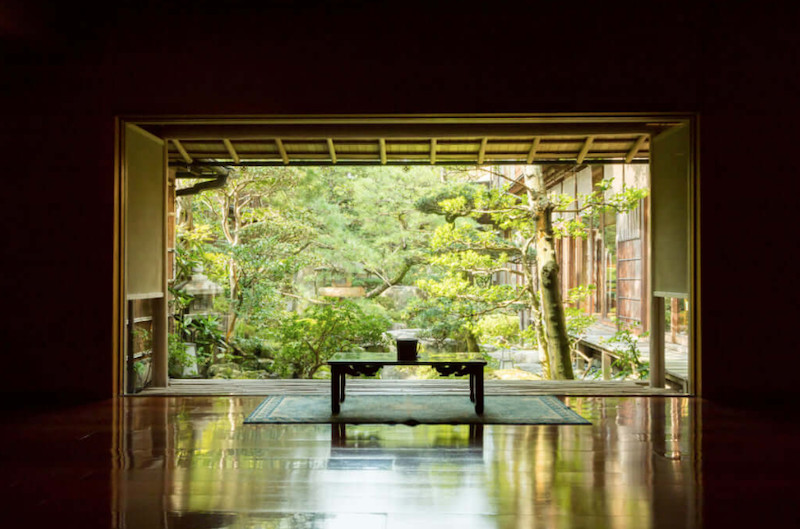
No visit to Japan is a complete without experiencing a ryokan. The essence of Japan – simple and comfortable, yet painstakingly detailed – will surround you the moment you enter your traditional Japanese-style room.
Nishimuraya Honkan is a member of Relais & Châteaux, and has been praised as one of the “best onsen ryokan” in Japan. It’s 34 guest rooms are all traditional, Japanese-style. Guests staying at Nishimuraya Honkan can enjoy the property’s three private hot spring onsen as well as complimentary access to all 7 of the public hot springs of Kinosaki Onsen. Run by the same family for over seven generations, this luxurious inn represents the culmination of a stay in Kinosaki. Its intimate atmosphere, private art gallery, gastronomic dishes and, of course, its classic Japanese rooms, all of which open onto a private garden, encapsulate the very nature of a ryokan.
Each Japanese-style guest room is 8 tatami mats in floor size and also features a terrace area for extra comfort and enjoying the outside scenery.
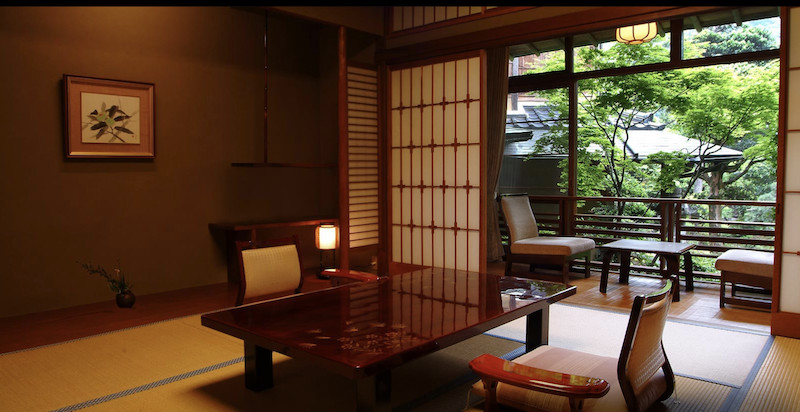


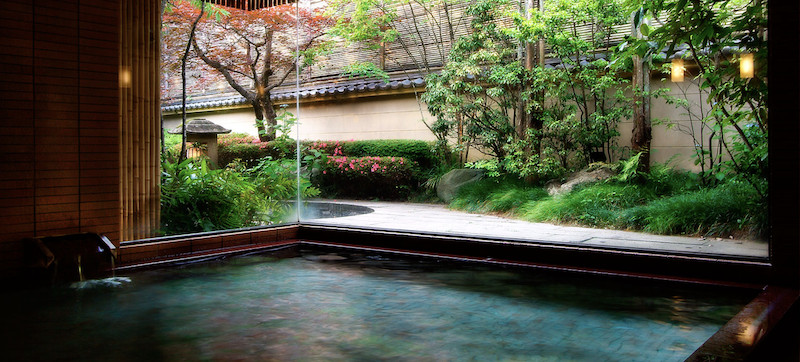

16:00pm – After checking into your traditional ryokan Japanese tatami room, the remainder of the afternoon is free for you to start exploring Kinosaki and its “Seven Hot Springs” which are open to the public.
The ryokan will provide you with your traditional yukata (light cotton kimono), and a jacket in cooler weather, so that you can join the locals while strolling the willow-lined streets of town.
In Kinosaki Onsen, it is tradition for visitors to wear yukata while they are staying. It is a common sight to see people out shopping, eating at restaurants, and strolling through the town while wearing yukata.

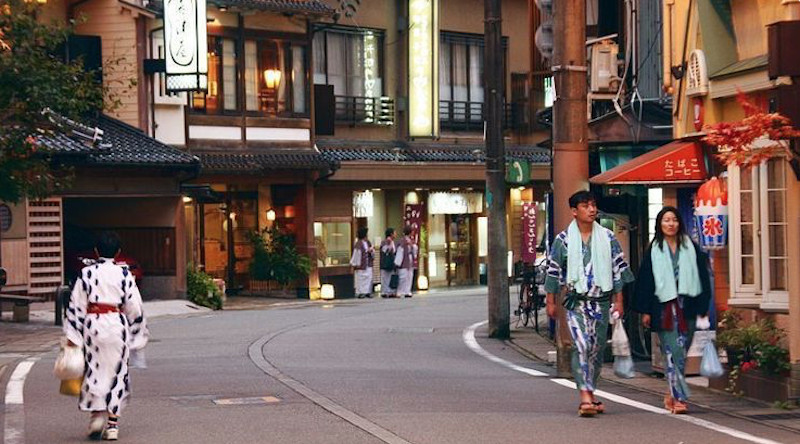
7pm – Japanese Kaiseki Dinner – The center of any stay at a ryokan is the food. The culinary artisans of Nishimuraya have been serving Japanese-style kaiseki (course) dinners for over 150 years. There is nothing more relaxing than enjoying dish after dish of wonderfully delicious Japanese food after an evening at the hot springs.

Kaiseki is a multi course meal of various Japanese foods that is similar to haute cuisine. A kaiseki meal is like no other Japanese meal you have ever experienced with each varying course and dish presented in an artistic fashion. Nishimuraya’s Executive Chef, Etsunobu Takahashi, and his culinary team will present Kinosaki’s famous seafood & meat dishes served in a variety of styles such as sashimi, boiled, grilled, and hot pot.
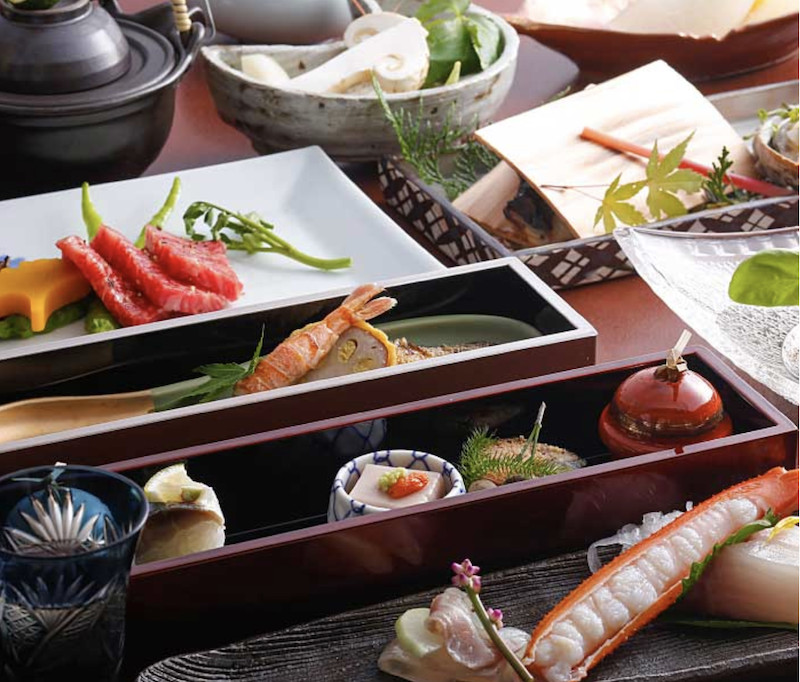
During our time in Kinosaki it is Matsuba Crab Season (November 7th to March 31st), a delicacy across Japan. This evening we will enjoy Nishimuraya’s seasonal Kaiseki Experience featuring individually selected Matsuba crabs and the finest specially dry-aged Tajima beef.
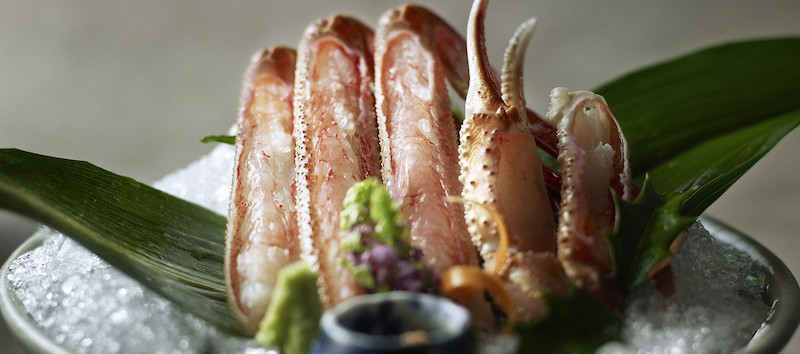
Matsuba Crab is the local name for the male snow crab harvested from the Sea of Japan on the doorstep of Kinosaki. The Matsuba crab season in Kinosaki Onsen is from November 7th to March 31st. In Japanese cooking, just about every portion of the crab is used. The tender, fluffy crab meat is of course a highlight of the Matsuba crab. Sashimi, boiled, grilled, hot pot… whatever the style, the succulent flavours of fresh Matsuba crab are sure to make an impression on your tastebuds and leave you wanting more!
pm – Following your Kaiseki dinner or while you have been out, upon returning to your room you will find your futon, Japanese style bedding, laid out and prepared for you. If you’re not quite ready for bed, enjoy a drink at the ryokan’s bar or head into the ryokan’s private Karaoke room for a few songs and a few laughs.
Accommodation: Nishimuraya Honkan
(Included Meals : B, D)
Day 5 – Kinosaki – Classic Japanese Ryokan & Onsen Experience
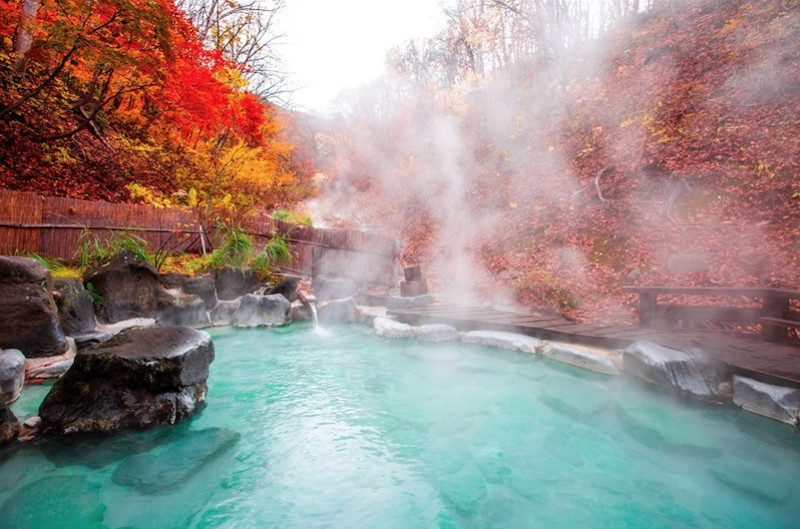
am – Enjoy a leisurely Japanese breakfast.
Today is a day at your leisure to explore Kinosaki at your own pace. As well as the opportunity to visit each or any of the 7 public Onsen in the town, there are a number of things that you are able to explore.
Kinosaki is a small onsen town with everything in walking distance as there is only 1 main street where all the ryokans, public baths and shops are located. This is one of the few onsen towns in Japan where you can walk in the street wearing your Ryokan’s yukata. Enjoy a walk along the willow and cherry tree lined canal that runs through the town centre. Stop into one of the public onsen for a relaxing soak, or take a seat and soak your feet in one of the streetside hot spring footpaths.
-
Onsen Experience – Our ryokan will provide you with details on how to best enjoy Onsen. Entering the onsen, or Japanese hot springs, is not a as simple as unclothing and hoping into the water. To Japanese, taking part in the onsen requires you to know about the rich culture and history behind them as well as to be familiar with the rituals and customs of the onsen.
There are several other hot spring towns in Japan, but very few have so many public bathhouses of varying style in such close proximity. All 7 of the onsen bathhouses can be walked to from the other. If you have the time, are up to the challenge and want to feel the cleanest and most relaxed you have ever felt in your life, try Kinosaki’s “Onsen Meguri”. Meguri is a Japanese term meaning pilgrimage, in this case you walk around to and soak in all 7 onsen bathhouses.

My favourite Kinosaki public onsen is Goshono-yu Onsen just a few metres away from our accommodation. It’s outdoor hot spring with waterfall is
Goshono-yu, also known as the “Water of Beauty,” brings luck in love and protection against fires. Goshono-yu was built in the likeness of Kyoto’s Imperial Palace. The foyer and lounge area are decorated with beautifully painted screens and the panels of the high ceiling are painted with Japanese flowers.
Large and impressive Japanese Cypress beams hold up the bath area’s expansive glass ceiling and floor to ceiling windows. Soak in the outdoor bath surrounded by lush trees and bathe in natural light. Relax to the crashing sounds of the waterfall in the background.



-
Visit Mt Daishi – After exploring the ‘corridors’ of the town, take the time to strike out further afield to get a different view. Climbing or taking the Ropeway Cable Car up Mount Daishi to Onsenji Temple affords a stunning vista over Kinosaki Onsen and its surroundings.
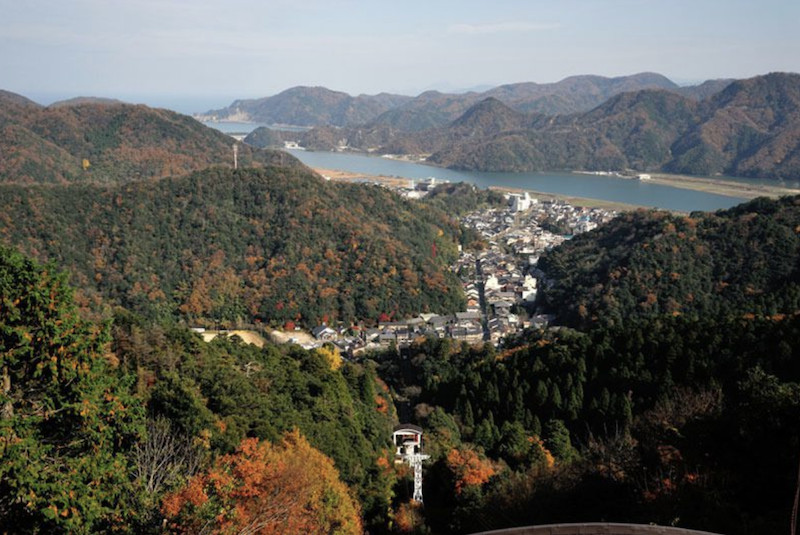
-
Visit Kono-yu – Visit the source of the hot springs a short walk from our ryokan and just in front of where the Ropeway Cable Car departs for Mt Dashi. The temperature of the water here is 81 degrees, so you can only put your hand close to the steam or pop a finger into the water for a split second. The nearby kiosk sells eggs for visitors that would like to try to make an Onsen Tamago (soft boiled egg). Tie the egg above the hot spring source and it takes just 11 minutes to perfectly boil an egg in the waters.
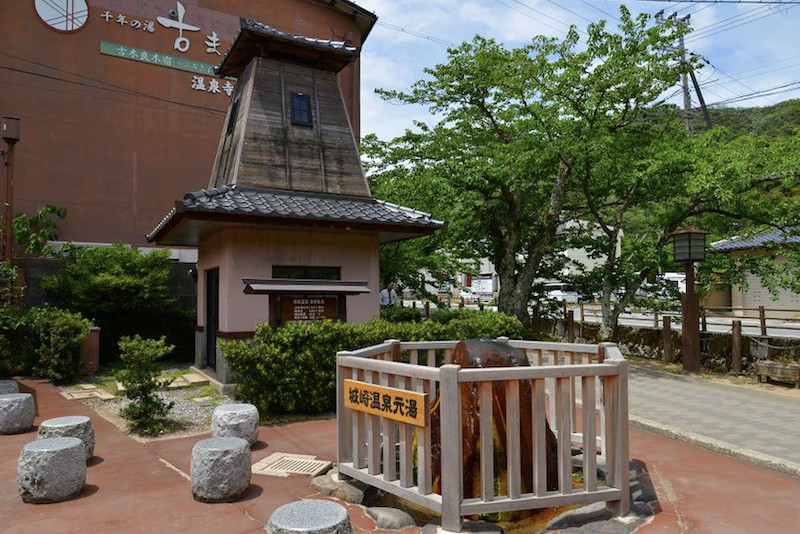

pm – Remainder of the day and evening at your leisure. For dinner decide whether you might like to enjoy another of Kinosaki’s specialties – Tajima Beef at some of the nearby restaurants.
Tajima Beef – Most people would recognise Kobe Beef as the number one beef in Japan, and perhaps the world. The name “Tajima” refers to the region of the Northern Hyogo prefecture, in which Kinosaki is part of, with Tajima beef the stock cattle for this world famous Kobe beef. Specially bred Tajima cattle are known for their tender and flavourful meat with well marbled textures.
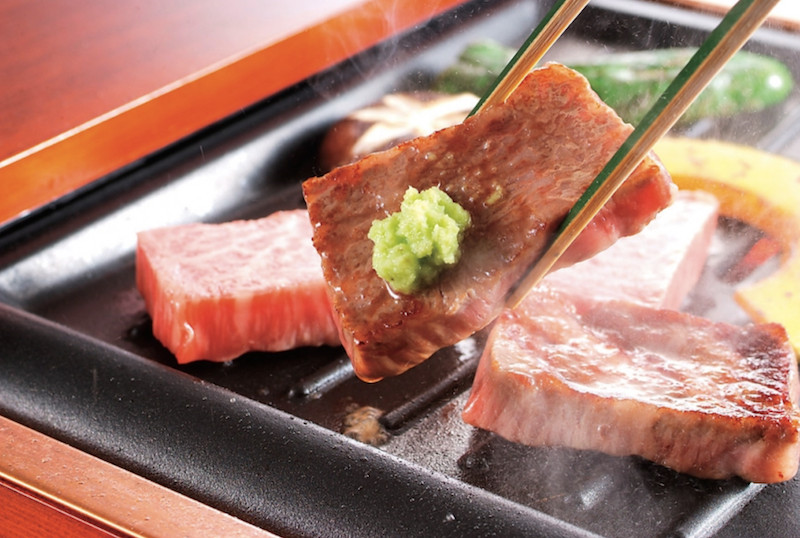
pm – The remainder of the evening at your leisure. Visit one of Kinosaki’s vintage arcade galleries or go for a late night soak at your favourite onsen.

Accommodation: Nishimuraya Honkan
(Included Meals : B, D)
Day 6 – KYOTO – The Cultural Jewel of Japan

Kyoto
With Zen gardens, bamboo groves, Buddhist temples and geisha shuffling along cobbled laneways, Kyoto seems to be lifted straight from the scenes of an ancient Japanese woodblock print. Kyoto is the epicenter of Japanese culture and history and one of the most fascinating of Asian cities. Founded in 794 as Japan’s capital, it is home to over 15 World Heritage sites which all are associated with traditional Japan including stunning temples and shrines, mysterious geisha, Zen rock gardens, imperial palaces, refined cuisine, ornate kimono, and centuries-old bamboo groves.
During autumn, Kyoto is a hotspot with its 2000+ temples and shrines attracting visitors from all over Japan, and beyond. Visiting the most popular temples at sunrise is a wonderful way to view the autumn leaves bathed in early morning light while also beating the crowds. Some of Kyoto’s temples (such as the UNESCO world heritage site Kiyomizu-dera) are accessible after-dark during autumn leaf season and the trees are illuminated, for an atmospheric experience that is definitely not to be missed!
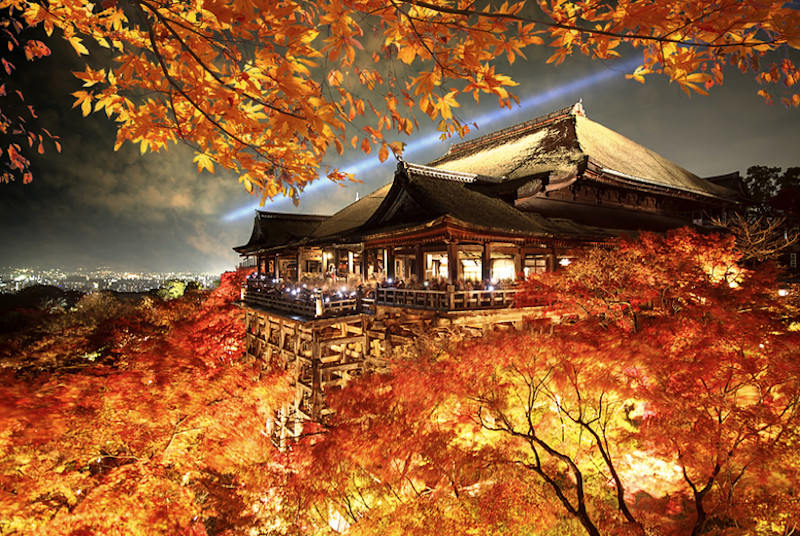
am – Breakfast at your leisure prior to checkout from Nishimuraya Honkan.
10:00am – Transfer to Kinosaki Onsen Station for our group departure to Kyoto.
10:35am – Train departs for Kyoto.
13:00pm – We will start our exploration of some of Kyoto’s famous attractions with a visit to the fascinating Shogun castle in central Kyoto.
-
Nijo-jo Castle is one of Kyoto’s most popular and impressive sights. It shows the power that the Shoguns wielded over the emperors throughout the Edo Period. built in 1603. It served as Tokugawa Ieyasu’s residence in Kyoto. Ieyasu was the Edo Period’s first shogun, or ruler of the country. It took 23 years for construction of the castle to be completed. Beginning in 1867, the castle became an imperial palace. It was later donated to the city of Kyoto and opened to the public as a historic site. As one of the most well-preserved castles of its era, Nijo Castle was named a UNESCO World Heritage Site in 1994. One of the most interesting features of the castle is its famous “nightingale floors”, special security measures to keep the shogun safe, which were designed to squeak when walked on to alert residents to any intruders.
14:00pm – Drop our bags in to our Kyoto hotel prior to our 16:00pm check in time.
Our Accommodation – Rinn Gion Shirakawa
The 4-star Rinn Gion Shirakawa features 22 rooms and is centrally located in Kyoto’s famous geisha district – Gion.
Gion is one of the most famous areas for sightseeing in Kyoto, and indeed in Japan. There are many traditional Japanese restaurants in machiya-style town houses in Gion, so it’s no wonder this traditional area is on everyone’s list when they come to Kyoto.
Gion is also one of the main hanamachi in Kyoto, meaning that it is a geisha district. So you stand a real chance to see a maiko or a geiko (Kyoto dialect for geisha) in Gion.
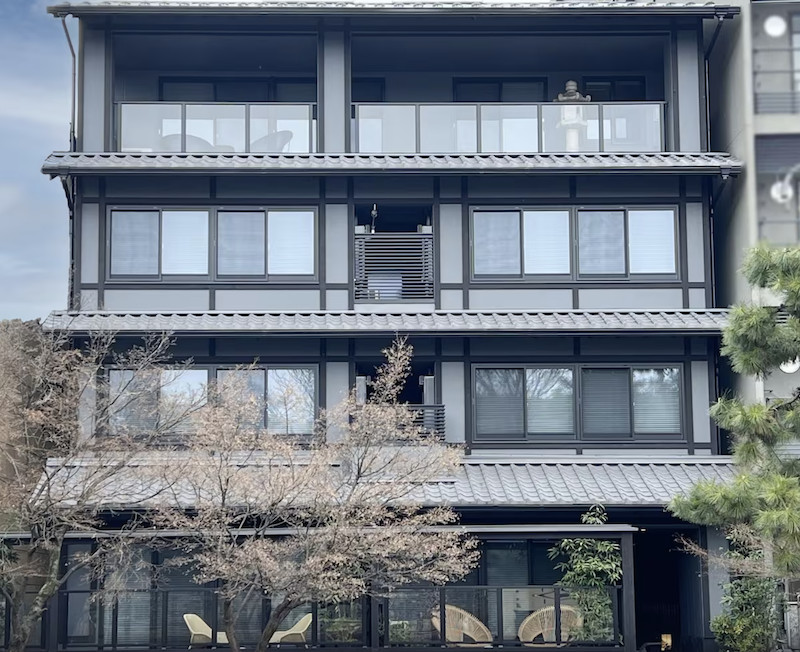
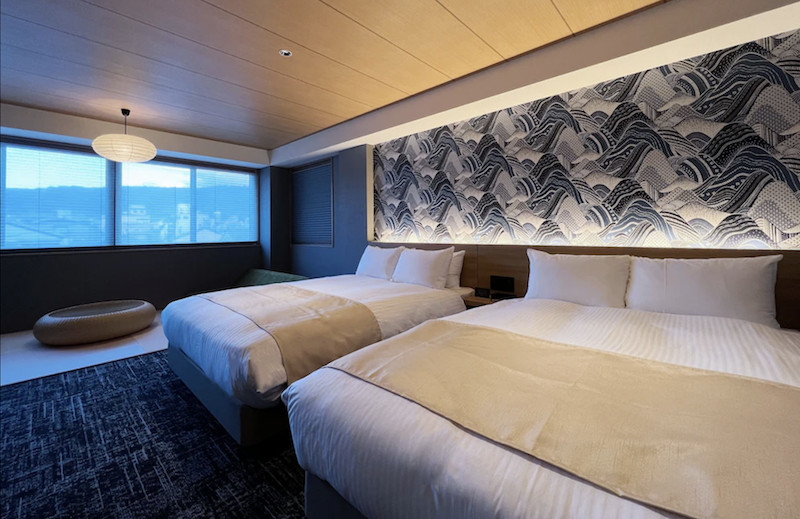
pm – Remainder of the afternoon at your leisure.
19:30pm – Group Dinner– Tonight we will enjoy dinner at one of Chef Nobu’s restaurants in Gion.

Accommodation: Rinn Gion Shirakawa
(Included Meals : B, D)
Day 7 – Arashiyama (West Kyoto) – UNESCO World Heritage “Bamboo Forest”
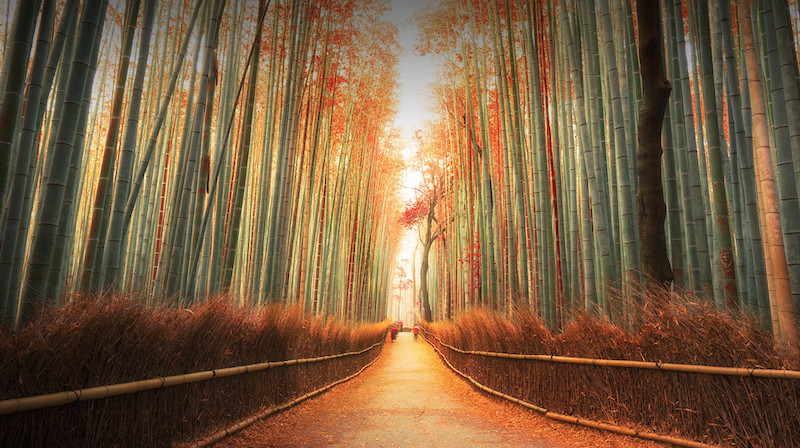
6:30am – This morning however, in an effort to try to beat the crowds at one of Kyoto’s most popular sites, we will arrange to catch taxis to head to West Kyoto’s famous Bamboo Forest in Arashiyama. We can then arrange to have breakfast somewhere in Arashiyama.
7amam – Arrival in Arashiyama home to the stunningly beautiful and magical atmosphere of the UNESCO World Heritage Listed Arashiyama Bamboo Grove.
Arashiyama
Set along the flowing Hozu River, Arashiyama is a welcome natural retreat from nearby bustling Kyoto. Dating back to 794, when Kyoto, then called Heian-kyo, became home to the imperial court. Arashiyama flourished as a summer and holiday retreat for court nobles attracted to its scenic charms.
Arashiyama’s Sagano Bamboo Forest, or Bamboo Grove, is both locally famous and world-renowned. Visitors can stroll paths lined with endless rows of towering bamboo. The experience has been described as other-worldly, serene, and dreamlike. The Japanese Ministry of Environment have named the sound of the rustling bamboo within this forest as one of the “100 Soundscapes of Japan”.

Remainder of the morning to explore the relaxed atmosphere of Arashiyama. As well as visiting the towering bamboo forest join Nico for a walk amongst some if its other important sites including:
-
Tenryu-ji Temple is the largest and most impressive temple in Arashiyama and is ranked first among Kyoto’s five great Zen temples. Founded in 1339 at the beginning of the Muromachi Period (1338-1573), the temple is one of Kyoto’s many UNESCO World Heritage Sites. In addition to its temple buildings, there are attractive gardens with walking paths. With origins dating back to 1339AD, it, and is now registered as a UNESCO World Heritage site.


-
Okochi Sanso Villa– is the two-hectare former estate of Denjiro Okochi (1898-1962), Japan’s most famous silent film star. It’s “spiral-garden” and the views from Mt. Ogura, where Okochi Sanso lies, have been celebrated in classical poetry since Heian times.

12noon – Group return to Gion with shared taxis.
pm – Remainder of the afternoon. Nico can suggest some of his favourite places to visit including:
-
-
Fushimi Inari Shrine – One of Japan’s most popular and photographed iconic shrines. Famous for its thousands of vermilion torii gates, Fushimi Inari was dedicated to the god of rice and sake in the 8th century, it is perhaps the single most impressive sight in all of Kyoto and its most important shrine.
-
The magical, seemingly unending path of over 5000 vibrant vermillion torii gates that wind through the hills behind Fushimi Inari-taisha Shrine makes it one of the most popular shrines in Japan. Due to its popularity with thousands of tourists during the day, a late afternoon visit will allow you to enjoy this picturesque setting and scenic walk without too many of the crowds.
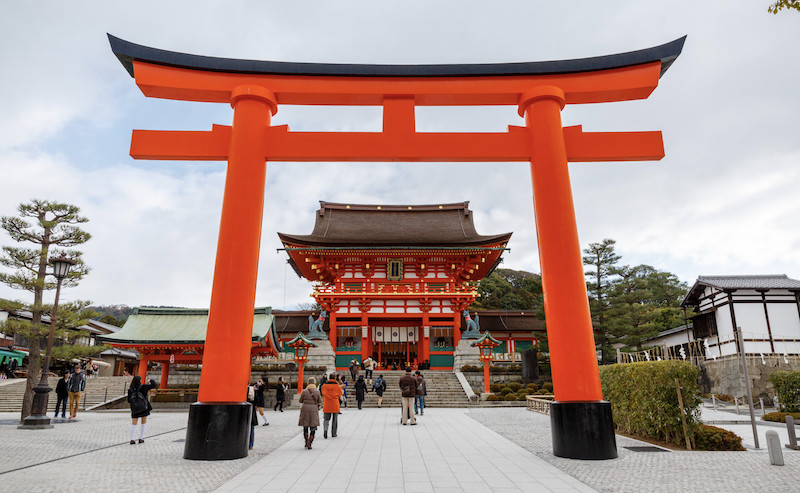

pm – Evening at your leisure. We might change things up a little for dinner tonight, so for those interested in a little Italian after all of the Japanese that we’ve been enjoying we can arrange for dinner at one of my favourite Italian restaurants a short walk from our hotel.
Accommodation:Rinn Gion Shirakawa
(Included Meals : – )
Day 8 – Kyoto – Japan’s Cultural Jewels
am – Our accommodation Rinn Gion Shirakawa doesn’t have a restaurant to be able to offer breakfast, but there are a few places nearby we are able to grab a coffee and some breakfast.
09:00am – Visits to some of Kyoto’s other famous UNESCO sights including:
-
Kinkaku-ji, the famed “Golden Pavilion,” is Kyoto’s most iconic sight, rising above its reflecting pond like an apparition. Glistening in the sun with gold leaf and perched on the edge of a lake, the original Zen Buddhist temple dates back to 1397 and is surrounded by a quintessentially Japanese garden that changes dramatically with the seasons.
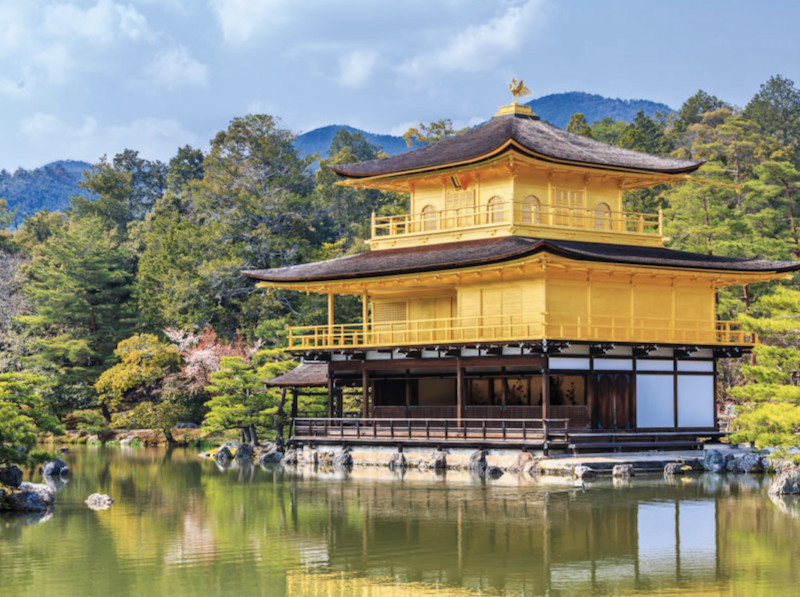
-
Philosopher’s Path Walk – The Philosopher’s Path in Kyoto located at the foot of Higashiyama, Sakyo-ku, Kyoto is one of the most popular walking paths in the city. The path extends about 1.8 km along a canal carrying water from Lake Biwa to the Higashiyama foothills. The Philosopher’s Path was made in 1890 upon the completion of the canal. At that time, intellectuals, such as the philosopher Kitaro Nishida of Kyoto University, lived nearby, and they would think over their ideas while walking along this cherry tree lined path, and that is how it eventually became called the Philosopher’s Path.

-
Ginkaku-ji Temple – Kyoto’s “Silver Pavilion” with its magnificient halls and gardens. Ginkaku-ji (Temple of the Silver Pavilion) is the more common name for Jisho-ji, a temple belonging to the Shokoku School of the Rinzai Zen sect of Buddhism. This popular tourist site was (along with 16 other sites in Kyoto) listed by UNESCO as a World Heritage site in 1994. Ginkaku-ji was not originally a temple. Ashikaga Yoshimasa (1436-1490), the 8th Ashikaga Shogun and grandson of Ashikaga Yoshimitsu (constructor of Kinkaku-ji, the temple of the golden pavilion) began construction in 1460 with the initial plan of covering it with silver foil, but was prevented from immediately completing his retirement villa due to the Onin Wars (1467-1477).
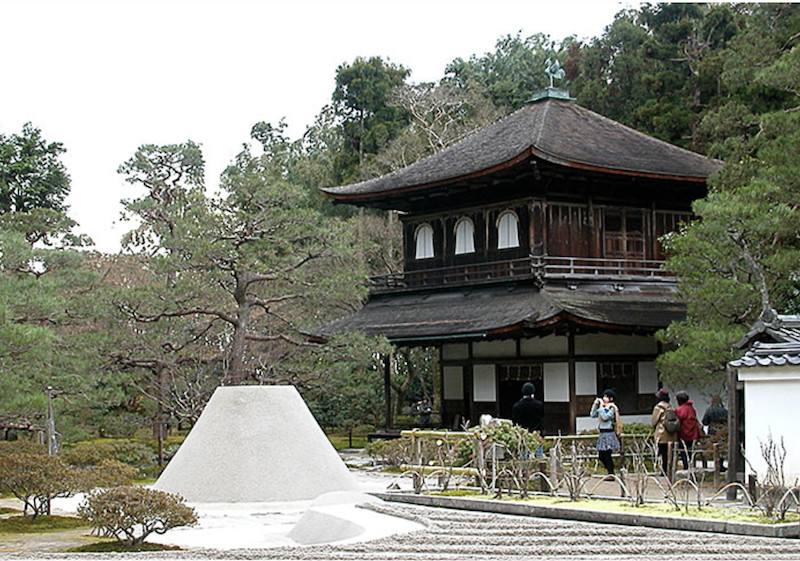
pm – Lunch and the remainder of the afternoon at your leisure.
For those of you interested, we can visit one of my favourite ramen restaurants. Seating only 7 people (we might have to take it in turns to eat) this intimate venue is operated with zen-precision by the chef serving some of the best seafood brothed ramen (with homemade ramen noodles) until sold-out.

16:30 – 19:30pm – Private “Gion, The World of the Geisha” Guided Walking Tour – We will take a tour of Kyoto’s famous Gion district and learn all about the mysterious geisha traditions of the area. Our private English-speaking guide will tell us about the traditions from an insider perspective, as it can be difficult for outsiders to access geisha culture otherwise. We will also have the opportunity to explore Gion’s beautiful streets, temples, shrines, and shops, for a comprehensive overview of historic Kyoto. With a bit of luck, we may spot a Maiko (apprentice geisha) or Geiko scurrying between teahouse appointments.
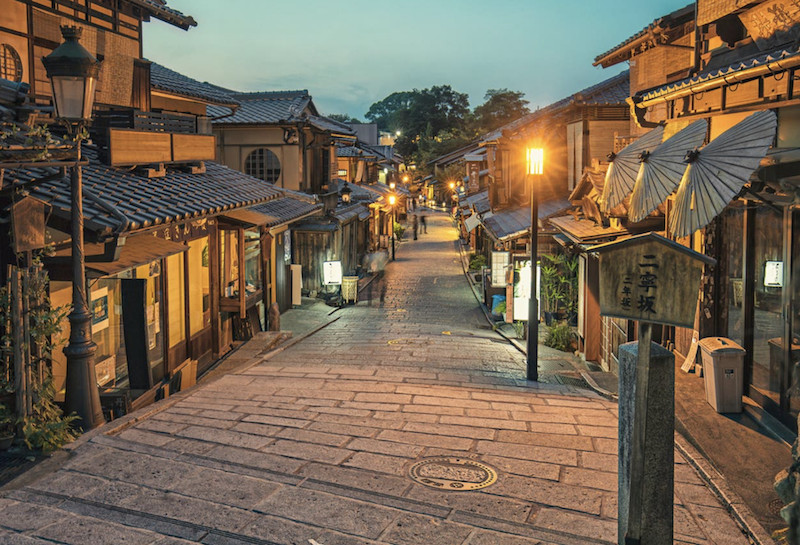
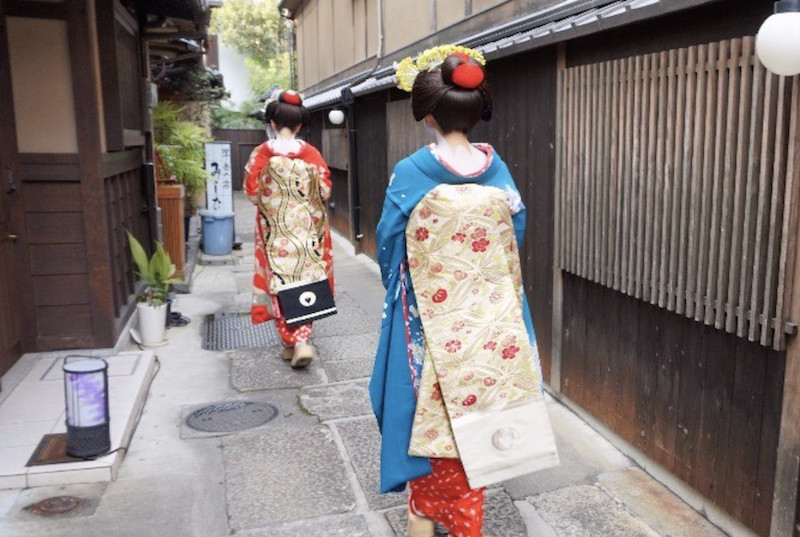
pm – Remainder of the evening at your leisure.
Day 9 – TOKYO – The world’s largest metropolis
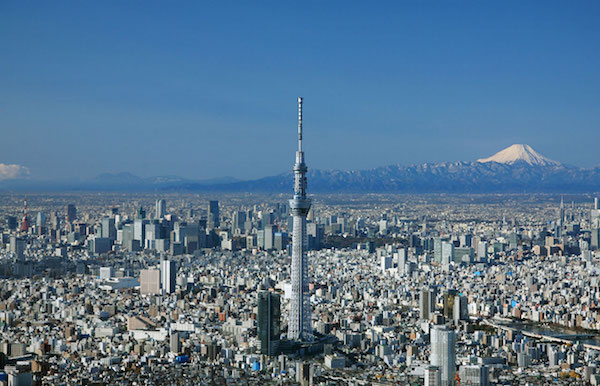
Tokyo
One of the world’s greatest metropolises, Tokyo is brimming with life and culture, both historical and contemporary, and is a sensory bombardment with its wonderful abundance of street-level detail meaning there is always something to keep the attention.
Tokyo is a truly overwhelming city: a vibrant hub of modern civilisation, constantly buzzing with activity. Japan’s capital since the Meiji restoration of 1868.
am – Breakfast at your leisure.
10:00am – Check out from our Kyoto hotel for departure by Japan’s famous high-speed Shinkansen Bullet train to Tokyo, for the 2 1/2 hour train journey with speeds of up to 300km/h. During our journey, there may be the possibility of seeing Japan’s majestic Mt Fuji as we pass by.

13:00pm – Upon arrival in Tokyo, we will drop our bags off at our hotel in one of Tokyo’s most vibrant and trendy districts.
GINZA
Built on the site of a silver coin mint dating back to the Edo era (1603-1868), Ginza is an area steeped in history with an air of self-assured elegance. Its main street houses some of Tokyo’s original department stores, and many still flock here for peerless service that matches the high-class products on offer. Ginza’s backstreets are adventures in boutique shopping and tiny yet exquisite bistros.
Ginza, often compared to New York’s Fifth Avenue, is where Tokyo’s rich history gracefully mingles with the present. Rather than resting on its reputation, however, Ginza constantly evolves with the times, providing cultured modernity, energy and old-Tokyo charm. With its understated elegance, Ginza promises a calm yet classy escape in the heart of Tokyo, making it even more of an urban retreat on the weekends (while we are visiting) when its main drag Chuo Dori becomes a stylish pedestrian promenade.

Our Accommodation – The Blossom Hibiya
Centrally located with only short walks to Shimabashi Train Station, which services the Haneda & Narita International Airports, the 4-star Blossom Hibiya Hotel is situated in the centre of Tokyo, a mere 6 minute walk to Tokyo’s finest shopping precinct of Ginza. With it’s birds-eye view lobby from the 17 floor, all guest rooms on the floors above have spectacular views across the Tokyo skyline.
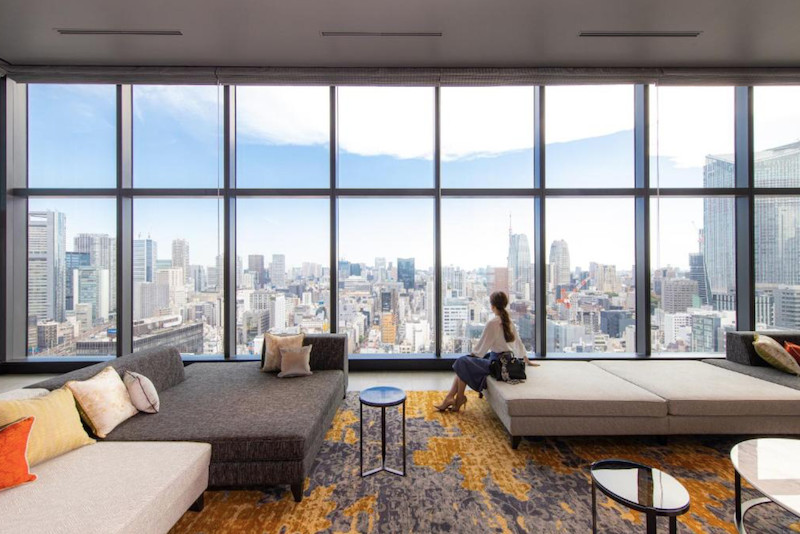

13:30pm – After dropping off our bags it will be time for a bite of lunch. We will visit a “depachika” at one of Tokyo’s oldest department stores in Ginza. The food markets at Tokyo’s department stores carry everything from ready-to-eat meals and food bento to packaged gifts.To walk into a depachika is to submit yourself to temptation – so take your time and keep your eye out for free food samples to taste before shelling out on an actual portion. Some depachika even have eat-in counters and sections dedicated to alcohol where you can indulge in sake and wine tastings. So really, a good depachika is more than a food court or grocery store; it is all your foodie dreams come true.
Remainder of the afternoon at your leisure. Either head back to the hotel for a relax or here are some suggestions for you to explore:
-
-
Asakusa – Also known as “Old Tokyo” is home to Senso-ji, Tokyo’s oldest and most sacred temple. The colourful pagoda-style temple was completed in 645, when Tokyo was nothing more than a fishing village, and is dedicated to Kannon, the goddess of mercy in several East Asian spiritual traditions
-

-
-
Tokyo Skytree – For a bird’s eye view of Tokyo, and just a short walk from Asakusa, we will visit one of Tokyo’s newest addition to its ever-changing skyline. The Tokyo Skytree was completed in 2011 and with its 634m height became the world’s tallest free-standing tower. From the 350m observation deck, you can see across the Kanto plain as far as Mt. Fuji on a clear day. When night falls the tower glows stylish pale blue, elegant purple or joyful orange for a beautiful light show, with special lighting for different seasons.
-

19:00pm – Group Dinner at a typical, Japanese-style Izakaya (Japanese Gastropub) restaurant for a quintessential Japanese dining experience of great food and drink amongst local Japanese.
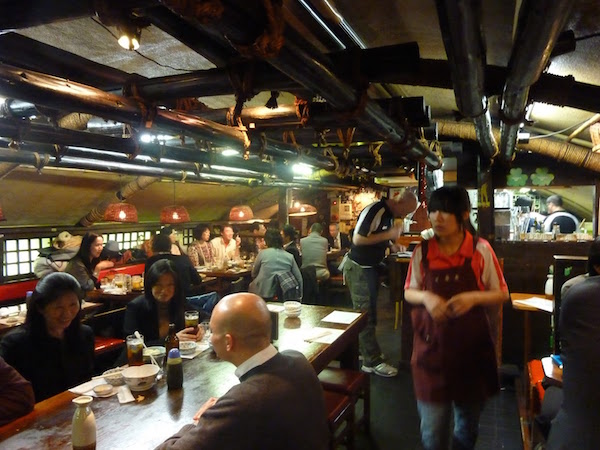
pm – Remainder of the evening at your leisure.
Accommodation – The Blossom Hibiya
(Included Meals : B, D)
Day 9 – Tokyo – Japanese Sake Experience
am – Breakfast and early morning at your leisure. Go for an early morning walk around the grounds of the Imperial Palace.

12:30pm / 14:30pm – Japanese Sake & Culture Appreciation Experience – This afternoon we have arranged for two intimate & private Japanese Sake Appreciation Experiences (5pax per session) at a boutique Sake & Sake Accoutrements Boutique in the trendy area of Roppongi.
The boutique represents the flagship sake brand of a 350-year-old brewery to showcase the wonders of Japanese sake brewing and express the beauty of Japanese culture.
The experience will provide for a guided comparative tasting of five varieties of top class sake presented in special artist-crafted sake cups and paired with seasonal bites curated by head chef and owner of Ginza Wakyo.




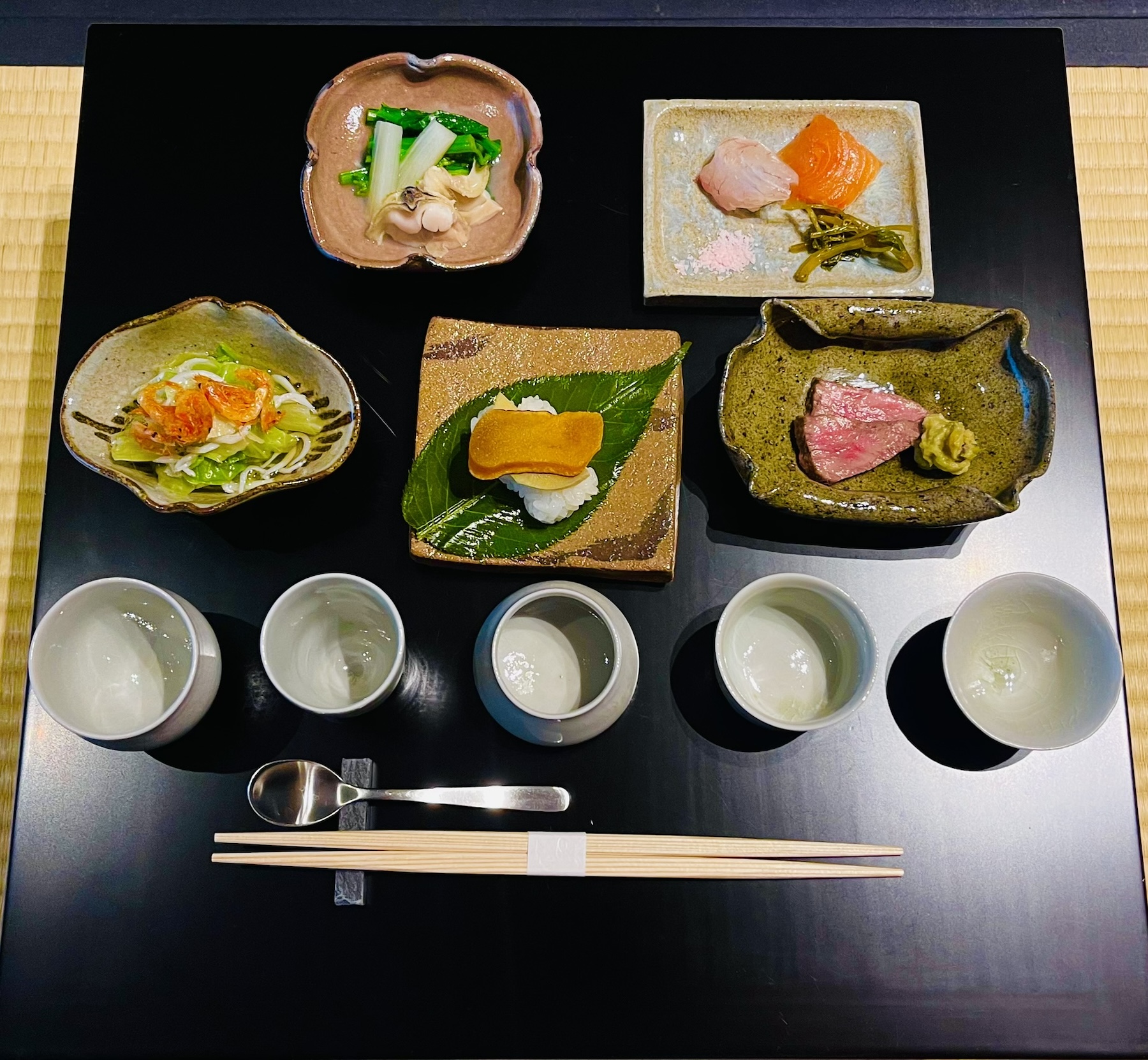
Afternoon at your leisure – Nico suggests a visit to one of Tokyo’s Moro Digital Museum’s TeamLAB BORDERLESS Exhibition, the Guinness Book of World Records winner for most popular museum in the world – TeamLab Borderless.
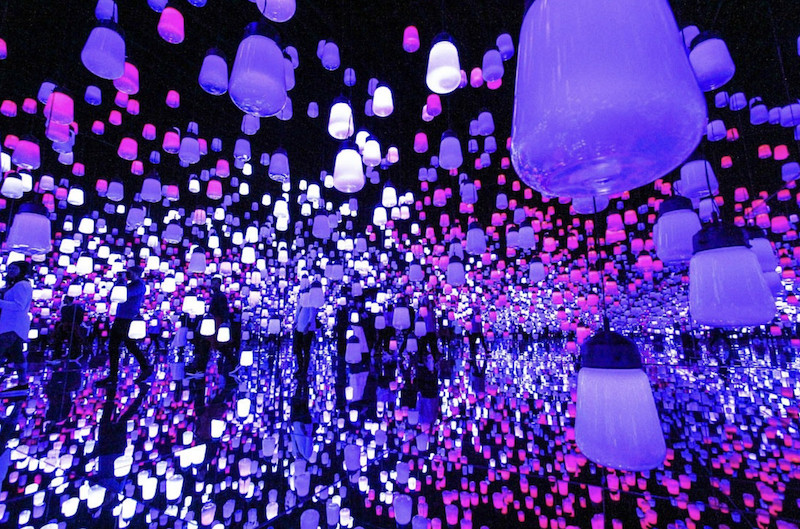
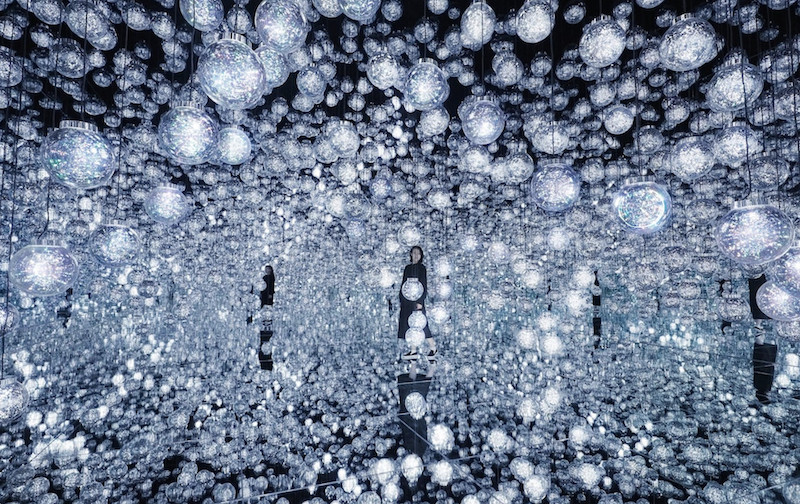
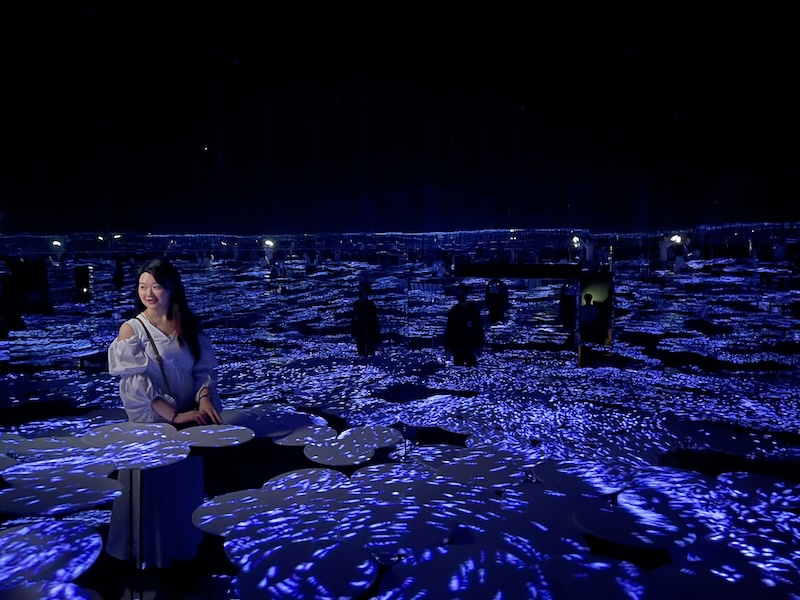
pm – Evening at your leisure. We haven’t arranged dinner for this evening so it is an opportunity to either visit one of Tokyo’s many Michelin rated restaurants or, at the other end of the scale, try one of my favourite Japanese dishes – tonkatsu – at a restaurant specialising in this dish of crumbled pork (prawn or chicken options are usually also available).

-
-
Michelin Restaurant (Optional Experience) – Tokyo has held its reputation as the city with the most Michelin stars in the world for a number of years now, and in 2023 Tokyo’s restaurants boasted a whopping 263 Michelin stars across 200 restaurants. For those of you wishing to experience why Tokyo is at the top of Michelin awards, this evening is a free evening for those wishing to dine amongst the Michelin stars.
-
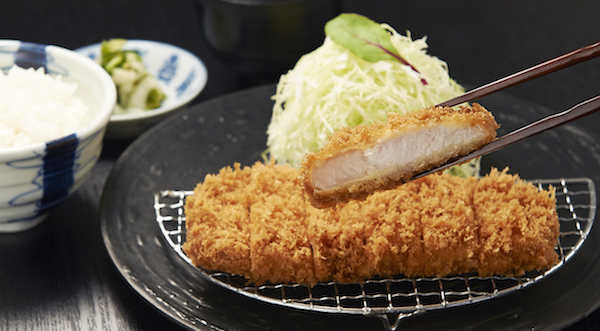
-
-
Tonkatsu – It is one of the most beloved “western style” Japanese foods in Japan. Originally considered a type of yōshoku—Japanese versions of European cuisine – the dish was invented in the late 19th. Tonkatsu is traditionally served with shredded cabbage and a thick Worcestershire-type sauce called tonkatsu sauce.
-
Accommodation – The Blossom Hibiya
(Included Meals : B, L)
Day 11 – Tokyo
am – Breakfast at your leisure.
FREE DAY – You would have now mastered Japan’s incredibly efficient public transportation system, so we have left today as a free day for you to explore Tokyo as you desire. We can provide you with suggestions on whether you would like to visit some of its cultural attractions, many museums, or alternatively you might like to do some last minute shopping before the tour ends.
Some suggestions are:

-
-
Meiji Shrine (above) – Tokyo’s most important Shinto shrine dedicated to the deified spirit of Emperor Meiji following his death in 1912. The shrine is located in a forest that consists of 120,000 trees of 365 different species, which were donated by people from all parts of Japan when the shrine was established. During autumn Meiji is one of Tokyo’s most visited sites for its famous golden Gingko tree-lined avenues. Ginkgo is more frequently seen in urban areas rather than out in the forests, and the leaves turn a beautiful shade of yellow rather than red.
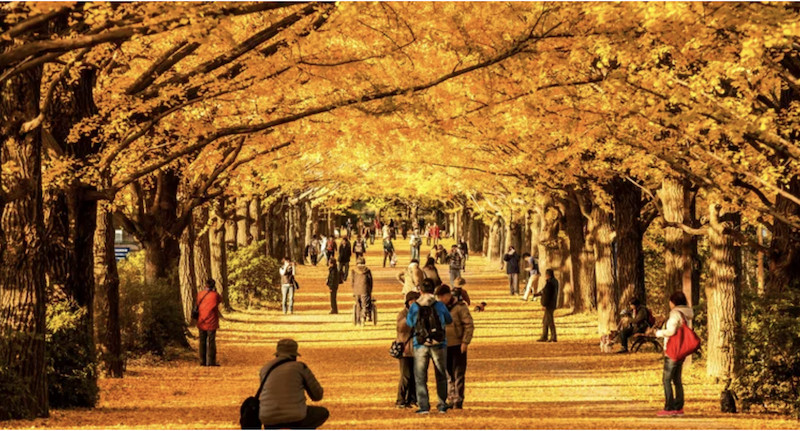
-
-
-
Shibuya – New Tokyo with its skyscrapers and colourful giant neon advertisements including the famous Shibuya pedestrian crossing which has 45,000 people crossing every hour and the famous “Hachiko” dog statue.
-
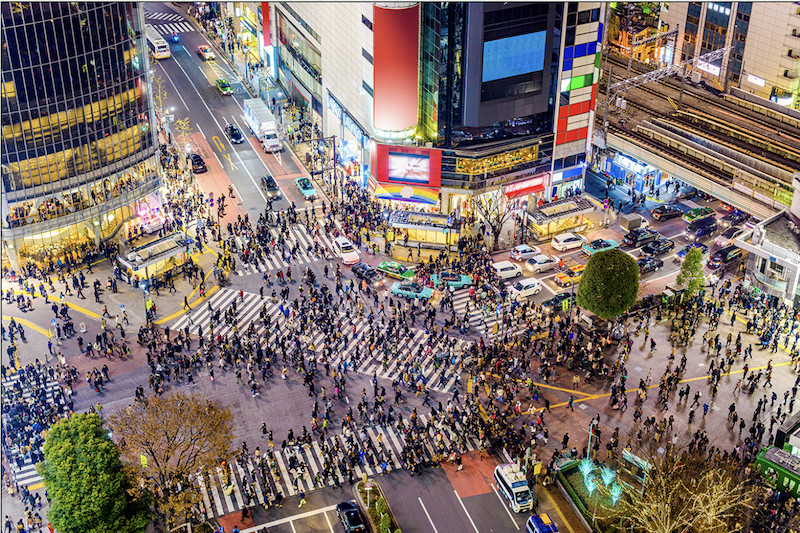
-
Harajuku – the epicenter of Japan’s fashion and youth culture trends
-
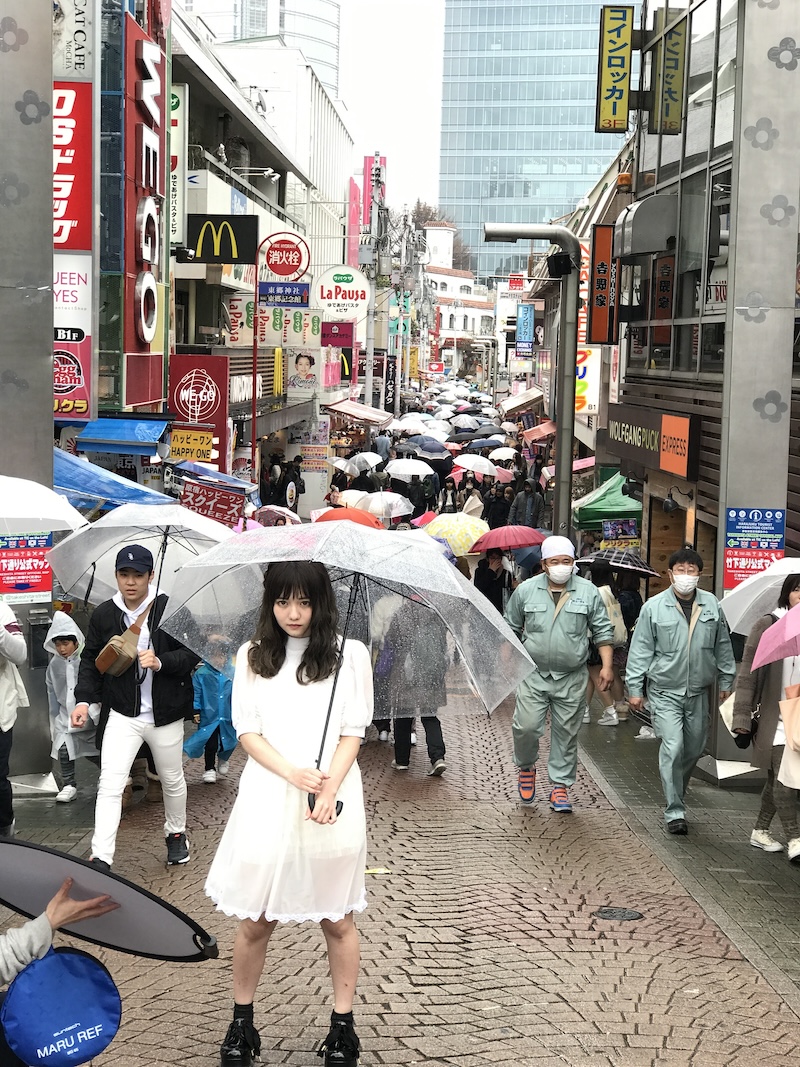
-
Ueno Park – one of Tokyo’s premier parks and home to the Tokyo National Museum
-
19:00pm – Final Group Dinner in Tokyo.
Accommodation – The Blossom Hibiya
(Included Meals : B, D)
Day 12 – Tokyo Departure
am – Breakfast at your leisure before checking out of our hotel.
For those of you returning to Australia, the closest airport to central Tokyo is HANEDA AIRPORT about 45 minutes out of town, while NARITA AIRPORT is about 90 minutes out of town.
Our closest Shimbashi Station has a direct rail connection with Haneda Airport, while Tokyo’s public train system is also able to arrive at Narita Airport. We will assist in arranging your preferred transfer to the airport of your departure.
TOUR INCLUSIONS
The following is INCLUDED in the price:
-
3 nights 4-star deluxe accommodation – Osaka – Cross Hotel Osaka
-
2 nights 5-star luxury ryokan accommodation – Kinosaki Onsen – Nishimuraya Honkan
-
3 nights 4-star deluxe accommodation – Kyoto – Rinn Gion Shirakawa
-
3 nights 4-star deluxe accommodation – Tokyo – The Blossom Hibiya
-
Included Meals & Cuisine Experiences – as per itinerary
-
-
Welcome Dinner (Osaka)
-
Evening Osaka Foodie Experience (Osaka)
-
Nishimuraya Honkan – Seasonal Kaiseki “Matsuba Crab & Tajima Beef” Dinner (Kinosaki)
-
Nobu “Itoh Dining” Dinner (Kyoto)
-
Izakaya Experience (Tokyo)
-
Sake Appreciation Experience (Tokyo)
-
Final Group Dinner Tokyo
-
Breakfast Daily (Osaka, Kinosaki, Tokyo)
-
-
-
English-speaking Japanese Guides for selected Culture Experiences, as per itinerary (Osaka, Kyoto, Tokyo)
-
-
Osaka Evening Food & Culture Experience (Osaka)
-
Gion – World of the Geisha Experience (Kyoto)
-
Sake Appreciation & Food Matching Experience (Tokyo)
-
-
-
Shinkansen Bullet train and Regional Train transfers (Osaka/Himeji; Osaka/Kinosaki; Kinosaki/Kyoto; Kyoto/Tokyo)
-
Luggage transfers between Osaka / Kyoto / Tokyo
-
Group Escort
-
Tour Photographer
-
Pre-Trip Briefing (Perth)
The following is NOT INCLUDED in the price:
-
International Airfares of your choice (Arrival into OSAKA / Departure from TOKYO)
-
Beverages for included meals
-
Non included meals
-
Entrance fees to museums, temples, attractions you wish to enter
-
Local public bus/subway/train transport (Osaka, Himeji, Kyoto, Tokyo)
-
Local group taxi transfers as per itinerary, to be shared
-
International Travel Insurance (compulsory)
**Note: Price is subject to change without notice as a result of international currency fluctuations that may affect the cost of land transportation, hotels, or other related services. You will be notified as soon as any changes are affected.
HOW TO BOOK
Booking Deadline: 10 December 2024
As accommodation and travel continue to be at their premium in Japan following its reopening to the world, due to the limited rooms available at our selected hotels, bookings must be secured by 10 December 2024 so that we can confirm them with our accommodation providers. We trust this meets with your understanding.
Booking Deposit:
A $AUD2000 non-refundable BOOKING DEPOSIT is required to hold a booking for the tour, at the time of your reservation. We are able to refund your Booking Deposit should a replacement be found for any cancelled places.. The Booking Deposit is used to secure accommodations and tour services at the time of your request for places. Banking Details are included below to facilitate your Booking Deposit payment. Please forward your completed BOOKING FORM to urbanprovider@icloud.com.
Final Payment:
Payment in full is required at least 90 days prior to departure (Final Payment Due: 14 August 2024). Payment can be made at any time before the final due date, if you prefer. Final Payment will be converted from ¥JPY to $AUD based on the prevailing Foreign Cash Currency Exchange rate at the time of payment. To view the Foreign Cash Currency Exchange to be used at the time of payment, please visit the Wise rates website at – https://wise.com/gb/currency-converter/aud-to-jpy-rate?amount=1
Cancellation:
In the event that you may have to cancel your tour for any reason, we allow refunds for payments in the following way:
-
-
100% refund provided for notice of cancellation given with 90 days notice. Any refunds of Booking Deposits to customers, within this time, are subject to each hotel/tour business’ own terms and conditions, which can be obtained upon request. Should we be able to fill your cancelled places, any paid Booking Deposits will be refunded.
-
60% refund provided for notice of cancellation between 60 to 89 days.
-
30% refund provided for notice of cancellation between 30 to 59 days
-
No refund is possible for cancellation less than 30 days prior to start date of the tour.
-
Payment Options (Places confirmed upon receipt of Booking Deposit)
Payment can be made by direct deposit at any NATIONAL AUSTRALIA BANK or online with your registered online banking facilities.
To pay online through your financial institution, please find the following account details to make it easy to make your payment :
-
-
-
Account Name: Urban Provider Pty Ltd
-
BSB Number: 086006
-
Account Number: 709609403
-
Please include your name at the “Description” field.
-
Credit Card Payments – Credit Card Payments can be facilitated and will attract a 2.3% Merchant Fee. Please contact Nico Moretti on +61 402 154 358 to arrange for your payment via Credit Card.
-
-



